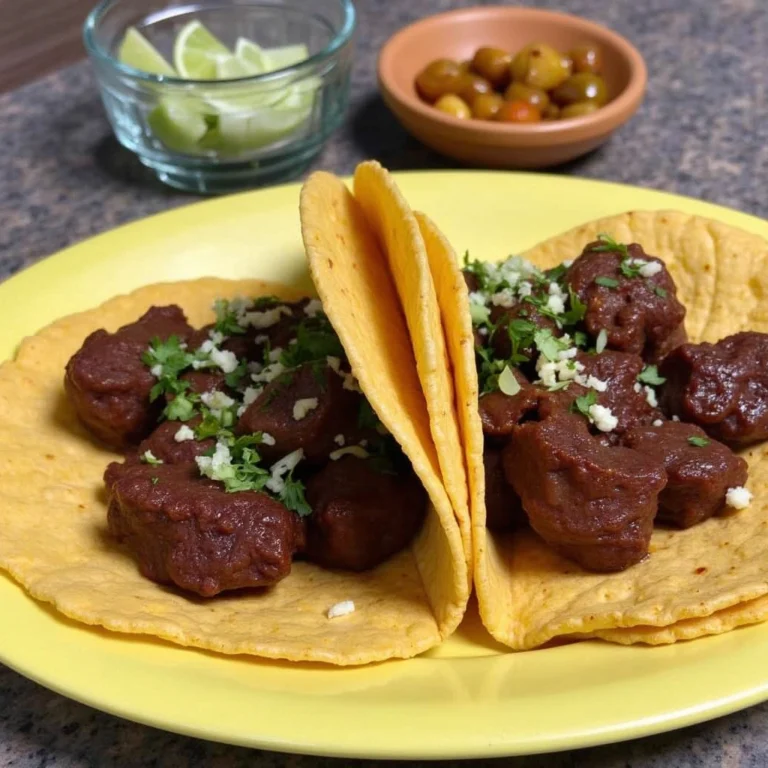Beef cheek meat is a hidden gem in the culinary world, prized for its rich flavor and luxurious texture. Often overlooked, this cut has gained popularity among chefs and home cooks alike for its ability to transform into a tender, melt-in-your-mouth delicacy when prepared correctly. Whether you’re crafting traditional dishes like Mexican barbacoa or experimenting with gourmet creations, beef cheek meat offers a unique and satisfying dining experience. This guide will explore what makes beef cheek meat special, how to cook it, and why it deserves a place in your kitchen repertoire.
What is Beef Cheek Meat?
Beef cheek meat comes from the facial muscles of a cow, specifically the cheeks. These muscles are well-developed due to the constant chewing and grinding of food, resulting in a lean cut that is densely packed with collagen. Collagen, a connective tissue, is the key to beef cheek’s magic. When cooked slowly over low heat, the collagen breaks down into gelatin, giving the meat its signature velvety texture and rich, succulent flavor. This makes beef cheek meat ideal for slow-cooking methods like braising, stewing, or smoking.
Why Cook with Beef Cheek Meat?
- Flavor and Texture: Beef cheek meat is incredibly flavorful, with a deep, beefy taste that stands out in any dish. Its high collagen content ensures that, when cooked properly, it becomes tender and almost buttery, making it a luxurious addition to meals.
- Versatility: Despite its humble origins, beef cheek meat is remarkably versatile. It can be used in a variety of cuisines, from traditional Mexican barbacoa and Italian osso buco to French-style stews and Asian-inspired braises. Its ability to absorb flavors makes it a fantastic canvas for experimenting with spices, herbs, and sauces.
- Affordability: Compared to more popular cuts like ribeye or filet mignon, beef cheek meat is relatively affordable. Its underrated status means it’s often priced lower, making it an excellent choice for budget-conscious cooks who still want to create impressive, restaurant-quality dishes.
- Sustainability: Using beef cheek meat is a sustainable choice, as it helps reduce food waste by utilizing parts of the animal that might otherwise be discarded. Embracing lesser-known cuts like beef cheek supports nose-to-tail eating, a practice that honors the whole animal and promotes ethical consumption.
How to Cook Beef Cheek Meat
Cooking beef cheek meat requires patience and the right techniques to unlock its full potential. Here are some tips to help you get started:
- Slow Cooking is Key: Beef cheek meat thrives in slow-cooked dishes. Braising, stewing, or smoking allows the collagen to break down gradually, resulting in tender, flavorful meat. Aim for low and slow cooking methods, often involving liquid like broth, wine, or tomatoes, to keep the meat moist and infuse it with flavor.
- Trim and Prep: Before cooking, trim any excess fat or silver skin from the beef cheeks. While some fat is desirable for flavor, too much can make the dish greasy. Season the meat generously with salt and pepper, and consider marinating it to enhance its flavor further.
- Sear for Depth: Searing the beef cheeks before slow cooking adds a rich, caramelized crust that deepens the overall flavor of the dish. Use a hot pan with a little oil to brown the meat on all sides, then deglaze the pan with liquid to capture all the flavorful bits.
- Pair with Complementary Ingredients: Beef cheek meat pairs beautifully with bold, aromatic ingredients like garlic, onions, herbs, and spices. Root vegetables, such as carrots and potatoes, also work well in slow-cooked dishes, adding texture and balance to the meal.
By understanding the unique qualities of beef cheek meat and mastering the techniques to cook it, you can elevate your meals and impress your family and friends. Whether you’re a seasoned chef or a home cook looking to try something new, beef cheek meat is a rewarding ingredient that promises rich flavors and unforgettable dining experiences.
For other protein options with similar cooking characteristics, explore our boneless beef recipes to learn more about how to prepare flavorful dishes.
Nutritional Value and Benefits
Packed with nutrients, beef cheek meat is both delicious and good for you:
- Protein Powerhouse: High in protein, promoting muscle repair and growth.
- Collagen-Rich: Supports skin and joint health when slow-cooked.
- Low Fat Content: Makes it a lean option for those watching their fat intake.
Looking for more healthy options? Check out these weight watchers dinner recipes for balanced meals that satisfy your taste buds.
How to Choose and Prepare Beef Cheek Meat
Selecting the Best Beef Cheeks
- Look for bright red, firm meat with minimal sinew.
- Grass-fed or organic options enhance the flavor.
- Available at butcher shops, online specialty stores, or some grocery stores.
Preparing Beef Cheek Meat
Preparation is key to a flavorful dish:
- Trim Excess Sinew: Removing tough tissues ensures a smoother texture after cooking.
- Marinate for Tenderness: Use red wine, garlic, and herbs for added depth.
- Sear for Flavor: Browning the meat before slow-cooking locks in flavor.
For more expert cooking advice, try our ground sausage dinner recipes for additional inspiration.

Must-Try Beef Cheek Recipes
1. Mexican Barbacoa
Slow-cooked to perfection, this recipe highlights the natural flavor of beef cheek meat.
- Ingredients:
- 2 lbs beef cheek meat
- Garlic, onions, and lime juice
- Chipotle peppers in adobo sauce
- Method:
- Sear the meat, add ingredients, and slow-cook for 6–8 hours.
Serve with tortillas, fresh cilantro, and onions for authentic tacos.
2. Braised Beef Cheeks
A hearty dish for special occasions:
- Ingredients:
- 2 lbs beef cheek meat
- Carrots, celery, and onions
- Method:
- Braise in a mixture of stock for 4–5 hours.
Pair with mashed potatoes or crusty bread for a comforting meal.

3. Shredded Beef Tacos
Pressure-cooked beef cheek meat makes a tender, flavorful filling.
- Toppings:
- Fresh salsa, guacamole, and pickled onions.
For other taco fillings, explore our quick dinner ideas for two for fast, flavorful options.
Serving and Pairing Ideas
Beef cheek meat’s rich, savory flavor makes it a standout centerpiece for any meal. Pairing it with the right sides, drinks, and garnishes can elevate the dining experience:
- Sides: The robust flavor of beef cheek meat pairs beautifully with creamy or hearty sides. Mashed potatoes, polenta, or roasted root vegetables like carrots and parsnips complement its richness. For a lighter option, consider a crisp green salad or steamed greens to balance the dish.
- Drinks: Bold red wines, such as malbec or cabernet sauvignon, are excellent choices to accompany beef cheek meat. Their tannins and deep flavors harmonize with the meat’s richness. If you prefer beer, opt for a dark ale or stout to match the dish’s intensity.
- Garnishes: Fresh herbs like parsley, cilantro, or a zesty gremolata (a mix of lemon zest, garlic, and parsley) can add a bright, refreshing contrast to the meat’s deep flavors. A sprinkle of flaky sea salt or a drizzle of high-quality olive oil can also enhance the dish’s final presentation.
Expert Tips for Cooking Beef Cheek Meat
To achieve the best results with beef cheek meat, follow these expert tips:
- Sear Before Slow-Cooking: Searing the meat before braising or stewing is crucial. It creates a caramelized crust that adds depth and complexity to the dish. Use a hot pan with a little oil to brown the meat on all sides, then deglaze the pan with wine, broth, or tomatoes to capture all the flavorful bits.
- Don’t Rush the Process: Beef cheek meat requires time to break down its collagen and become tender. Low and slow cooking methods, such as braising or stewing, are ideal. Aim for a cooking time of at least 2–3 hours, or until the meat is fork-tender.
- Use Aromatics: Aromatics like onions, garlic, carrots, and celery form the flavor base for many beef cheek dishes. Herbs such as thyme, rosemary, and bay leaves add layers of complexity, while spices like cumin, paprika, or star anise can introduce exciting global flavors.
- Experiment with Liquids: The cooking liquid plays a significant role in infusing flavor into the meat. Wine, broth, beer, or even coconut milk can be used to create a rich, flavorful sauce. Don’t be afraid to experiment with different combinations to suit your taste.
FAQs About Beef Cheek Meat
Q: Is beef cheek meat tender?
A: Yes, when cooked slowly, the collagen in beef cheek meat breaks down, resulting in a tender, melt-in-your-mouth texture that’s incredibly satisfying.
Q: Where can I buy beef cheek meat?
A: Beef cheek meat is widely available at butcher shops, specialty meat stores, and online retailers. Some supermarkets also carry it, especially those with a focus on quality cuts.
Q: Can beef cheek meat be grilled?
A: While beef cheek meat is best suited for slow-cooking methods, it can be grilled if marinated and cooked over indirect heat. However, slow-cooking ensures the most tender results.
Q: Is beef cheek meat healthy?
A: Absolutely! Beef cheek meat is high in protein, low in fat, and rich in collagen, which supports joint and skin health. It’s a nutritious choice for those looking to enjoy a flavorful, wholesome meal.
By understanding how to serve, pair, and cook beef cheek meat, you can unlock its full potential and create dishes that are both impressive and deeply satisfying. Whether you’re a seasoned cook or a curious beginner, this underrated cut offers endless possibilities for culinary creativity.
Conclusion
Beef cheek meat is an underrated cut with immense flavor potential. Whether you’re slow-cooking a Mexican barbacoa, braising it in red wine, or shredding it for tacos, this collagen-rich meat is versatile and satisfying. Ready to expand your cooking repertoire? Try pairing your dishes with sides like dense bean salad or explore our lobster meat recipes for something truly special.
Transform your meals with the rich, tender qualities of beef cheek meat!

